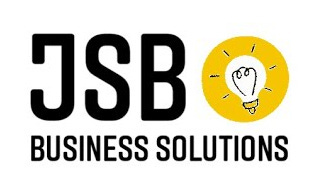This training guide outlines a step-by-step approach for engaging small business owners using a time-tested strategy I’ve implemented over 20 years across various industries. The goal of this strategy is not to immediately sell, but to build a relationship, establish trust, and ultimately offer valuable services that can help business owners improve their operations.
1. Establishing the Right Mindset
Objective: The first step is to develop the right mindset. If you approach these encounters with the mentality of a seller, your efforts will likely be ineffective. Instead, think of yourself as an ambassador—someone who is there to establish trust and offer value, not to push a sale.
Key Principles:
Don’t Sell, Build Trust: Your primary objective is to make connections, not to sell products right away. People do business with those they trust. Build rapport, listen actively, and engage in conversations without the pressure to pitch.
Establish Relationships: Your success in business is largely determined by the relationships you build. Think of this strategy as a way to network and find long-term partners, not just customers.
Be Patient: Establishing trust and rapport takes time. Don’t expect immediate sales or commitments—focus on laying a foundation that you can build on with follow-ups.
2. Dress for Success: Appearance Matters
Objective: Your appearance should reflect your professionalism, but also be appropriate for the environment. You need to dress to blend in with the local community, yet still appear professional.
Dressing for Different Environments:
A-Class Neighborhoods (Upscale Areas):
Wear a suit jacket, dress slacks, and dress shoes.
A conservative polo shirt or dress shirt is appropriate.
Keep jewelry minimal.
B/C-Class Neighborhoods (Moderate Areas):
Opt for a nice polo shirt or sweater with dress slacks.
Dress shoes should still be worn, but a more casual look is acceptable.
Jewelry should be kept to a minimum.
C/D-Class Neighborhoods (Lower-Priced Areas):
Dark jeans, a sweater, or a polo shirt will suffice.
Stick to simple dress shoes.
Jewelry should be minimal to avoid appearing out of place or flashy.
Why This Matters:
Professional yet Relatable: You want to be approachable, and your attire can either make you seem too distant or too out of place. Dressing appropriately helps you strike the right balance.
Focus on Trust: A professional appearance fosters trust. When business owners see you as approachable and respectful of their community, they will be more likely to listen to you.
3. Target Small Business Owners
Objective: Focus your efforts on small businesses—those with fewer than 10 employees—where it’s more likely you’ll encounter the business owner directly.
Why Small Businesses?
Direct Access: In smaller businesses, the owner is often directly involved in day-to-day operations. There are fewer layers of bureaucracy, making it easier to speak with the decision-maker.
Speed of Decision-Making: Business owners with smaller teams tend to make decisions more quickly than those at larger companies.
Less Competition: Smaller businesses are often less likely to be inundated with salespeople, allowing you to make a stronger impact when you engage.
What You Should Know:
Avoid Large Corporations: While you can still target large corporations, they often have gatekeepers—employees whose job it is to prevent unsolicited approaches. In these cases, you may waste time trying to get through layers of staff.
Focus on Local Businesses: Aim for businesses that are part of your local community, where you can position yourself as a trusted neighborhood representative.
4. Understand Your Value Proposition
Objective: Know exactly what you are offering the business owner. Your value proposition should be clear, concise, and focused on addressing the needs of the business.
Define Your Offering:
Business Development Support: Help business owners improve operational efficiency, increase sales, or enhance their customer base.
Legal and Financial Services: Assist with navigating legal issues, such as employee benefits, contract disputes, fraud prevention, and business tax audits.
Employee Retention: Offer solutions to help business owners address challenges like identity theft, garnishments, and personal issues that may distract employees from their work.
Tailor Your Pitch:
Identify Needs: Before walking in, consider the types of problems the business owner may face. For instance, if you know that local businesses in your area face high employee turnover, you can pitch services that help with retention.
Focus on Outcomes: Business owners care about results. When presenting your services, frame them in terms of how they can improve the bottom line or reduce business-related stress for the owner.
5. Craft a Concise and Effective Introduction
Objective: Your first impression should be short, professional, and to the point. Make it clear that you’re not there to sell but to build a relationship.
Steps for an Effective Introduction:
Greeting and Handshake: Start with a warm, confident handshake and a polite greeting. Your tone should be friendly but professional.
Introduce Yourself: Say, “Hi, my name is [Your Name], and I’m your neighborhood [Company Name] representative.” This establishes that you are local and not a generic salesperson.
State Your Intent: Let them know you're not there to sell. For example, say, “I’m here to introduce myself and make you aware of the services we offer to local businesses like yours.”
Offer Your Business Card: Give them a well-designed business card. First impressions matter, so make sure the card reflects your professionalism and the company you represent.
Best Practices:
Be Friendly, Not Pushy: Avoid overwhelming the business owner with too much information right away. The goal is to introduce yourself, not to give a sales pitch.
Be Prepared for Resistance: Some owners may be hesitant to engage, but remain polite and professional. If the gatekeeper or employee refuses to let you speak to the owner, ask if they can connect you to someone who handles employee benefits or legal matters.
6. Prepare Your Pitch: Keep It Concise
Objective: Once you have the business owner’s attention, keep your pitch short and focused. You only have a few minutes to make an impact.
Components of Your Pitch:
Ask for 15 Minutes: Offer a brief, value-focused introduction. For example, “Would 15 minutes of your time be worth it if I could show you how we can help reduce your business expenses—like legal, marketing, and purchasing services?”
Offer Solutions, Not Products: Focus on how your services can solve problems or save money for the business owner. For example, “I can show you how to save thousands of dollars by addressing employee benefits and legal issues that could be costing your business.”
Use Technology: If they’re interested, use an app or tool to demonstrate your value. Showing is more powerful than telling. For example, demonstrate how a legal plan works through the app.
7. Handling Gatekeepers
Objective: In some cases, you’ll encounter employees who act as gatekeepers, preventing you from reaching the business owner. The way you handle these situations can determine your success.
Steps for Dealing with Gatekeepers:
Respectfully Ask: If an employee answers the door, ask, “Are you the person who handles employee benefits or legal matters for the business?” If they are not, ask if they can introduce you to the business owner.
Be Courteous: Always remain respectful and professional, even if the gatekeeper is unhelpful. Never argue or push back aggressively.
Offer to Follow Up: If the business owner is not available, offer to follow up by phone or email and schedule a time to meet in person.
8. The Follow-Up Process
Objective: Don’t leave the conversation without a clear next step. Follow-up is key to converting initial meetings into lasting relationships.
Best Practices:
Follow Up Within 24 Hours: After your initial drop-in, follow up the next day. This ensures that you stay fresh in the business owner’s mind.
Reiterate the Value Proposition: When you follow up, restate the benefits you discussed, emphasizing how your services will help their business.
Schedule a Formal Meeting: During the follow-up, suggest a formal meeting where you can provide a more detailed presentation. Be specific with the date and time: “Would morning or afternoon work better for you?”
9. Closing the Deal
Objective: The goal is not to close the deal on the first visit but to schedule another meeting where you can provide a more thorough presentation.
Key Steps:
Schedule a Follow-Up Meeting: Ensure that the business owner understands that this is just an initial meeting, and the next step is a formal presentation.
Offer Incentives: If necessary, offer small incentives like lunch or coffee to make scheduling easier.
Reiterate the Value Proposition: Emphasize the benefits of your service, such as saving money on legal and financial matters, which will ultimately improve their business.
10. Leave Materials Only After Presentation
Objective: Avoid leaving behind brochures or flyers during the initial visit. Materials can make the owner feel overwhelmed or uninterested.
Why You Shouldn’t Leave Materials Immediately:
Information Overload: If you leave behind brochures too soon, the business owner may think they know everything they need to and will be less likely to engage with you again.
Create Curiosity: By withholding materials until after the presentation, you create an air of mystery, making the business owner more likely to want to schedule a second meeting.
Call to Action:
To gain a deeper understanding of the nuances behind this strategy and learn how to effectively apply it in your own business endeavors, I invite you to watch the full video where I break down the approach in even greater detail.
If you're ready to take your business to the next level with a tailored approach that aligns with your specific professional goals or entrepreneurial needs, don't hesitate to reach out to JSB Business Solutions Group. We specialize in creating customized strategies to help professionals and entrepreneurs succeed.
Access our contact information below to learn more or get in touch with us today!
If you’re ready to grow… subscribe, schedule a meet up, or keep showing up.
As an aside. Part of the reason why we launched on this platform is because we want to promote other entrepreneurs and grow givers. We’d love to hear your story.
The world around us wasn’t built by the exceptional. It was built by everyday people who were willing to do exceptional things. Go build something.

Thanks for reading The Grow Givers Project! Subscribe for free to receive new posts and support my work. And remember, sharing is caring.















Share this post